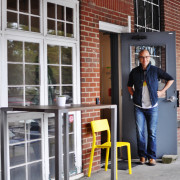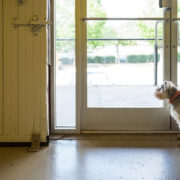balancing act
Trigger warning: This post contains references to major depressive disorder, generalized anxiety disorder, eating disorders and suicide. Please read with caution, and only if you are in a safe space.
This post is made easy by OrthoCarolina as a part of our hygge cares programming, where each month we focus on different wellness topics with programming. Learn more about what that’s all about here.
Wellness is a fickle thing, isn’t it?
The idea of wellness has eluded me for a long time, because for the majority of my life I have not been well, nor have I been in an environment that encouraged me to get well. It’s really only the past year or so I’ve begun my wellness journey, and I’ve come to learn wellness is a constant balancing act – it’s a bit like putting a stack of books on your head, quite honestly. One slight move in the wrong direction, and everything is toppling down.
A few weeks ago I read a post by Katie Levans with the Charlotte Agenda comparing depression to drowning. It resonated deeply for me because for years now, I’ve been struggling to stay afloat. I’ve lived with major depressive disorder and generalized anxiety disorder since I was a preteen. That daily float-or-sink struggle against my own mind is a familiar one.
Few people realized it, but at the beginning of 2019 I certainly felt I was fighting a losing battle.
Winter and early spring is always a hard time for me. My therapist has suggested I experience SAD symptoms in addition to my depression. To boot, the months from November to April each year are fraught with traumatic anniversaries my body relives even if my mind puts up a mental block. It means yearly, these months are the months I struggle most.
Of course, early 2019 was no different, except it was. I sunk further into the abyss than I had for years. When I look back on that time, the only word that comes to mind is pain. Intense, all-consuming, life-stopping pain.
Depression is tough to describe because it’s a mental illness. Very few people can see the physical pain you’re in, but please believe it is a very physical illness as well. Your head hurts when it’s not in a fog. Exhaustion racks your body, making even the simplest of tasks a marathon. Your body may physically ache. You’re feeling more emotions than you ever knew possible, but at the same time you’re numb. It’s a tightrope walk of chaos and tension. It is pure, unadulterated hell.
And yet, few in my life knew about any of this. That’s the other thing about depression being a silent, invisible illness. Unless I told someone the immense emotional pain I was in, they had no idea. I showed up to work every day. I smiled at people when they walked through the doors. I confined my panic attacks and sobbing sessions to the empty bathroom, turning ghostly silent if someone walked in.

And then I would go home, crawl under my weighted blanket, and wish with all my might that I wouldn’t wake up the next morning.
I did this almost daily for 5 months. Looking back and knowing how awful I felt during that time, I’m still not quite sure how I made it through. I know for a fact that at the time, I didn’t care if I made it through. I didn’t care about anything.
All-in-all, I got pretty lucky. Before the bought of depression had hit, a few months earlier I had begun to see a therapist for the intense daily anxiety I was experiencing. When depression slipped in, I already had at least one part of a wellness support system in place. I believe that’s what saved me.
But, after months of a deep, depressive episode so all-consuming it was terrifying, my therapist and I decided it was time to add another player to my wellness team: a psychiatrist. For the first time in my life since experiencing depression symptoms as early as 8 years old, I tried an antidepressant.
Talk about terrifying.
It took a long time to get it right, but not nearly as long as I expected. It wasn’t and still isn’t a magic pill – it doesn’t erase my symptoms completely and fill me with confetti and sunshine, as my dear friend and colleague Megan Pastor would joke. It also didn’t make me a drooling, shell of a person I was. The only thing my antidepressant did for me is lessen the blows of life. It made it possible for me to manage my symptoms, which were threatening to weigh me down and sink me. It allowed me to fight myself – the half of myself that was trying to self-destruct – and win.
The change wasn’t immediate, and there was a lot of other work to be done to pull myself out. I worked on coping mechanisms with my therapist. I put up boundaries for myself to not spread myself thin: with friends and family, with work, with myself. With the help of my psychiatrist, I continue to make adjustments to my meds, adding a sleep aid to help with the insomnia I’ve struggled with since I was in grade school.
I started building in days off to my schedule (a new, novel idea for me). I started planning self care nights rather than waiting for when I badly needed them. I started taking breaks and walks throughout the day. I started reading nightly again.
If there’s one thing that has saved me time and time again, no matter what, it’s been books. They provided a world I can disappear to when mine is getting too tough. When I pick up a book, no matter where I am, I’m home. I vanish into another’s story and forget about my own. I find characters who understand me, who anger me, who love me, and for just a little while, my tumultuous mind is at peace.
Finally, I took another big step: I started working out again. Since 16, I’ve struggled with an eating disorder. That could be a blog post itself, but it’s important here because the idea of allowing myself to move my body just for the joy of moving it is something I’ve never been able to do. For me, it was always about making myself as thin as possible, as small as possible, until hopefully, I just disappeared.

So it took a long time, a lot of discussions with my therapist and, to be quite frank, a lot of fucking guts to step back into my gym shoes. It started with going to Planet Fitness a few times a week – only when I felt totally ready and safe. Never if my stomach is empty. Never if I’m having a bad body image day. Never, ever if I’m having disordered thoughts.
It’s been about 6 months of me working out regularly again. It’s required a major mental shift in how I approach physical wellness. For example, I don’t weigh myself. I have absolutely no idea how much I weigh, and when I have to get weighed at the doctor or at my tri-monthly psychiatry appointments, I’ll always step on the scale backwards with a firm instruction to whoever is weighing me not to share the number. I don’t measure myself, and I definitely don’t count calories.
For me, working out is not – and can never be – about my physical appearance. It’s a way to move my body. It’s a way to get rid of the excessive anxious energy I still harbor daily. It’s a way for me to spend time with myself, a person I’m only just starting to like. Working out is just another step in the wellness program that, hopefully, keeps the bad thoughts more manageable.
And here we are again: it’s November, and already I can feel the depression tugging at the edges of my mind, moving in for its almost annual staycation. Right now, it’s a slow drip rather than a pool I could drown in, but I have no idea what this year will look like. Maybe it will be better – maybe I will struggle for only a few weeks, or not at all. It’s happened before.
And maybe not. That is the ugly, brutal truth about my mental illnesses. I can do everything right and check every single box on the wellness checklist, and still have no want to live. It’s pretty damn terrifying.
The only thing I can do is take every day as it comes, and do my best to take care of myself, both when I’m feeling really good and have no symptoms at all, as well as when I’m in the thick of it, fighting for life. That’s what wellness means to me: balance.











Leave a Reply
Want to join the discussion?Feel free to contribute!